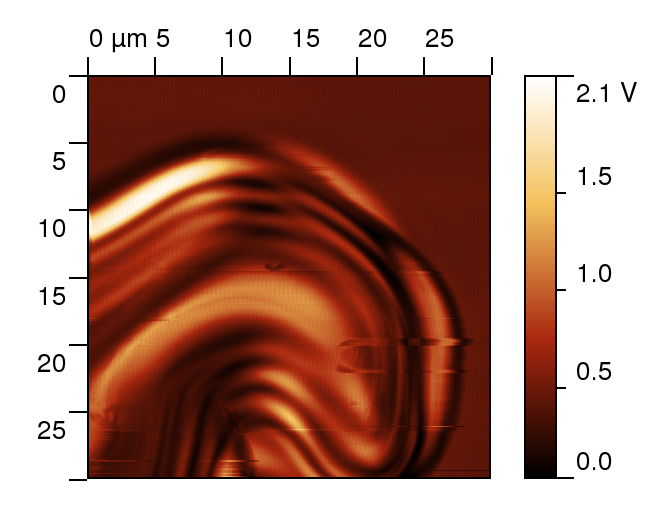Volumetric structure
Analysis of sample composition or at least several its physical properties which is not
limited by surface but in the whole volume of a sample, is a dream not only of metrology experts but
also many scientists from the field of physics, chemistry and material engineering.
Methods for non-destructive analysis in the volume are still very limited and it is a question if we should
expect a breakthrough in their development in near future.
If the chemical composition is of our main interest, then destructive methods can be used based on
electron microscopy, ion beam milling and similar techniques which enable controlled ablation of the sample while
analysing the chemical properties of extracted particles, for example using mass spectrometer.
In the field of non-destructive methods based on scanning probe microscopy the situation
is substantially more complicated. There are several methods which make the 3D analysis in principle feasible
for example based on magnetic resonance or based on propagation of heat from non-stationary source.
These are always very complicated experiments requiring very specialized equipment as well as complex data processing.
If only some physical properties are of the main interest
we can even use non-destructive methods depending on what the sample makes possible. In transparent samples
we can study the internal structure optically. The example method is here described measurement of local
reflection using raster optical microscope working in near field (SNOM) where we can study the interference
between delaminated thin layer of diamond-like-carbon and the substrate.
Such optical data it is possible to interpret using the methods known
from reflectometry and thus it is possible to locally determine for example the index of refraction. In ideal
case we could consider the system as multilayer and analyse its local characteristics. It is obvious that even
if in this case the measurement gives the volume distribution of some quantity, we cannot consider such procedure
as universal method of analysis in volume.
|
 |
| SNOM snímek delaminované vrstvy |
From the metrology point of view there is a long way to the 3D analysis while the nearest
are the destructive methods based on electron microscopy.
At our department we focus on spatial 3D reconstruction from the data acquired from optical
and thermal SPM methods. We calculate the volumetric effects numerically using finite element methods and the FDTD method.
|

